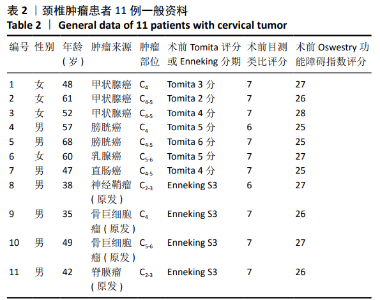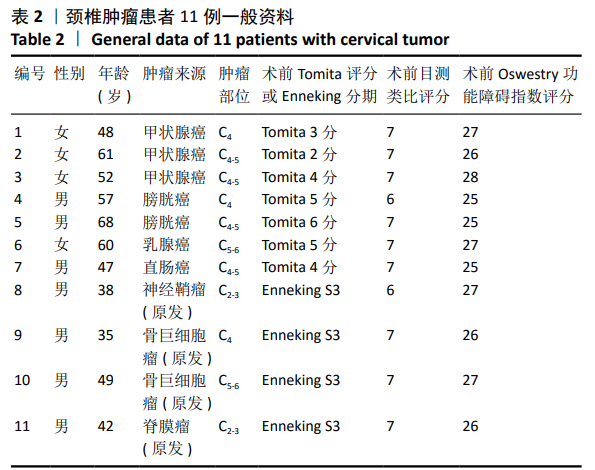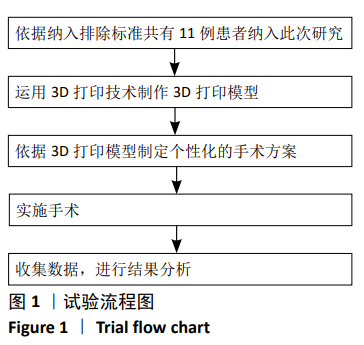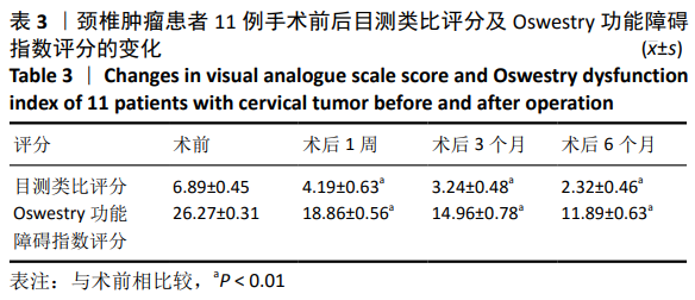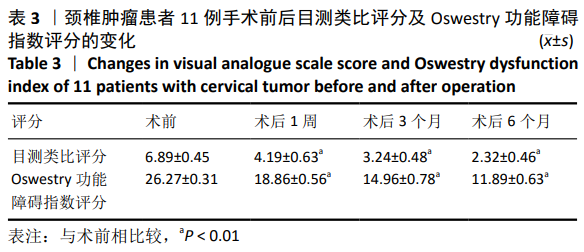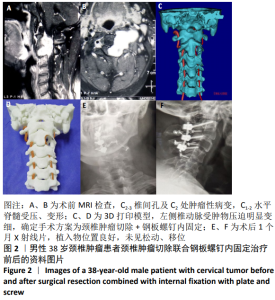[1] 蒋伟刚,刘耀升,刘蜀彬.脊柱转移瘤的外科治疗进展[J].中国矫形外科杂志,2015,23(1):55-59.
[2] 李建民.脊柱肿瘤的外科治疗现状与进展[J].中国矫形外科杂志, 2012,20(23):2203-2204.
[3] 王金玉,周政纲,王思哲,等.3D打印技术在经椎弓根椎体截骨术治疗脊柱后凸畸形中的应用[J].中国骨与关节损伤杂志, 2019, 34(5):496-498.
[4] 吴信,尚显文,张皓,等.3D打印技术在多学科协作脊柱肿瘤精准化、个性化手术治疗的应用[J].实用医学杂志,2019,35(16):2592-2597.
[5] ARDINI AL, LAROSA MA, RUBENS MACIEL FILHO RM, et al. Cranial reconstruction: 3D biomodel and custom-built implant created using additive manufacturing.J Craniomaxillofac Surg.2014;42(8):1877-1884.
[6] BORIANI S, GASBARRINI A, BANDIERA S, et al. Predictors for surgical complications of en bloc resections in the spine: review of 220 cases treated by the same team.Eur Spine J.2016;25:3932-3941.
[7] 杨文华,姜亮,刘忠军.颈椎肿瘤手术的常见并发症[J].中国脊柱脊髓杂志,2017,27(5):456-460.
[8] MISSENARD G, BOUTHORS C, FADEL E, et al. Surgical strategies for primary malignant tumors of the thoracic and lumbar spine.Orthop Traumatol Surg Res.2020;106:S53-S62.
[9] 姚孟宇,张余.上颈椎肿瘤外科治疗进展[J].中国骨科临床与基础研究杂志,2014,6(5):307-313.
[10] 陈雍君,钟华,华强,等.3D打印技术辅助上颈椎肿瘤模型的术前规划及手术模拟[J].中国组织工程研究,2018,22(35):5614-5619.
[11] YANG M, LI C, LI Y, et al. Application of 3D rapid prototyping technology in posterior corrective surgery for lenke 1 adolescent idiopathic scoliosis patients.Medicine (Baltimore). 2015;94(8):e582.
[12] UPENDRA BN, MEENA D, CHOWDHURY B, et al. Outcome-based classification for assessment of thoracic pedicular screw placement.Spine(Phila Pa 1976).2008;33(4):384-390.
[13] 夏晓龙,陈扬,邱奕雁,等.3D打印技术应用于脊柱个性化椎体定制的实验研究[J].中国骨与关节损伤杂志,2016,31(3):247-250.
[14] 钱文彬,杨欣建,蓝涛,等.3D技术打印椎体在全脊椎整块切除术中应用的初步探膜[J].生物骨科材料与临床研究,2015,12(2):9-11.
[15] MATAI I,KAUR G,SEYEDSALEHI A,et al.Progress in 3D bioprinting technology for tissue/organ regenerative engineering.Biomaterials. 2020;226:119536.
[16] 苏鹏,孟纯阳.3D打印技术在脊柱肿瘤诊疗中的应用[J].济宁医学院学报,2019,42(6):436-440.
[17] ZHOU J, LU YT, LU FY. Combined transoral and endoscopic approach for cervical spine tumor resection.Medicine(Baltimore). 2019;98(22): e15822.
[18] 马立敏,张余,周烨,等.3D打印技术辅助颈椎高位多节段脊膜瘤手术临床应用[J].中国数字医学,2014,9(6):67-70.
[19] XIAO JR, HUANG WD, YANG XH, et al. En Bloc Resection of Primary Malignant Bone Tumor in the Cervical Spine Based on 3-Dimensional Printing Technology. Orthop Surg. 2016;8(2):171-178.
[20] KANEYAMA S, SUGAWARA T, SUMI M. Safe and accurate midcervical pedicle screw insertion procedure with the patient-specific screw guide template system.Spine(Phila Pa 1976). 2015;40(6):E341-348.
[21] 白博,白雪岭,赵小文,等.3D打印在脊柱外科的应用现状与未来[J].中国骨与关节杂志,2017,6(5):321-325.
[22] LI X, WANG Y, ZHAO Y, et al. Multilevel 3D Printing Implant for Reconstructing Cervical Spine With Metastatic Papillary Thyroid Carcinoma. Spine(Phila Pa 1976).2017;42(22):E1326-E1330.
[23] 章玉冰,余润泽,陶学顺,等.3D打印技术辅助脊柱肿瘤手术治疗的临床应用[J].实用癌症杂志,2019,34(6):1038-1040.
[24] 侯明明.聚甲基丙烯酸甲酯骨水泥作为化疗药物复合载体的研究[D].武汉:武汉大学,2016.
[25] KOTO K, MURATA H, SAWAI Y, et al. Cytotoxic effects of zoledronic acid-loaded hydroxyapatite and bone cement in malignant tumors.Oncol Lett.2017;14(2):1648-1656.
[26] AHANGAR P, AZIZ M, ROSENZWEIG DH, et al. Advances in personalized treatment of metastatic spine disease.Ann Transl Med.2019;7(10):223.
[27] TALEBIAN S, FOROUGHI J, WADE SJ, et al. Biopolymers for Antitumor Implantable Drug Delivery Systems: Recent Advances and Future Outlook. Adv Mater Weinheim.2018;30(31):e170-6665.
[28] 叶添文,马君,赵剑佺,等.3D打印模型辅助CBL教学法在骨科临床教学中的应用[J].医学研究与教育,2019,36(6):76-80.
[29] 叶哲伟,刘融.述评—3D打印技术在骨科的临床应用及展望[J].生物骨科材料与临床研究,2020,17(1):7-10,84.
[30] 王琪,刘军,王亚楠,等.3D打印技术在脊柱肿瘤手术中的应用[J].解放军医药杂志,2016,28(11):16-19.
|
